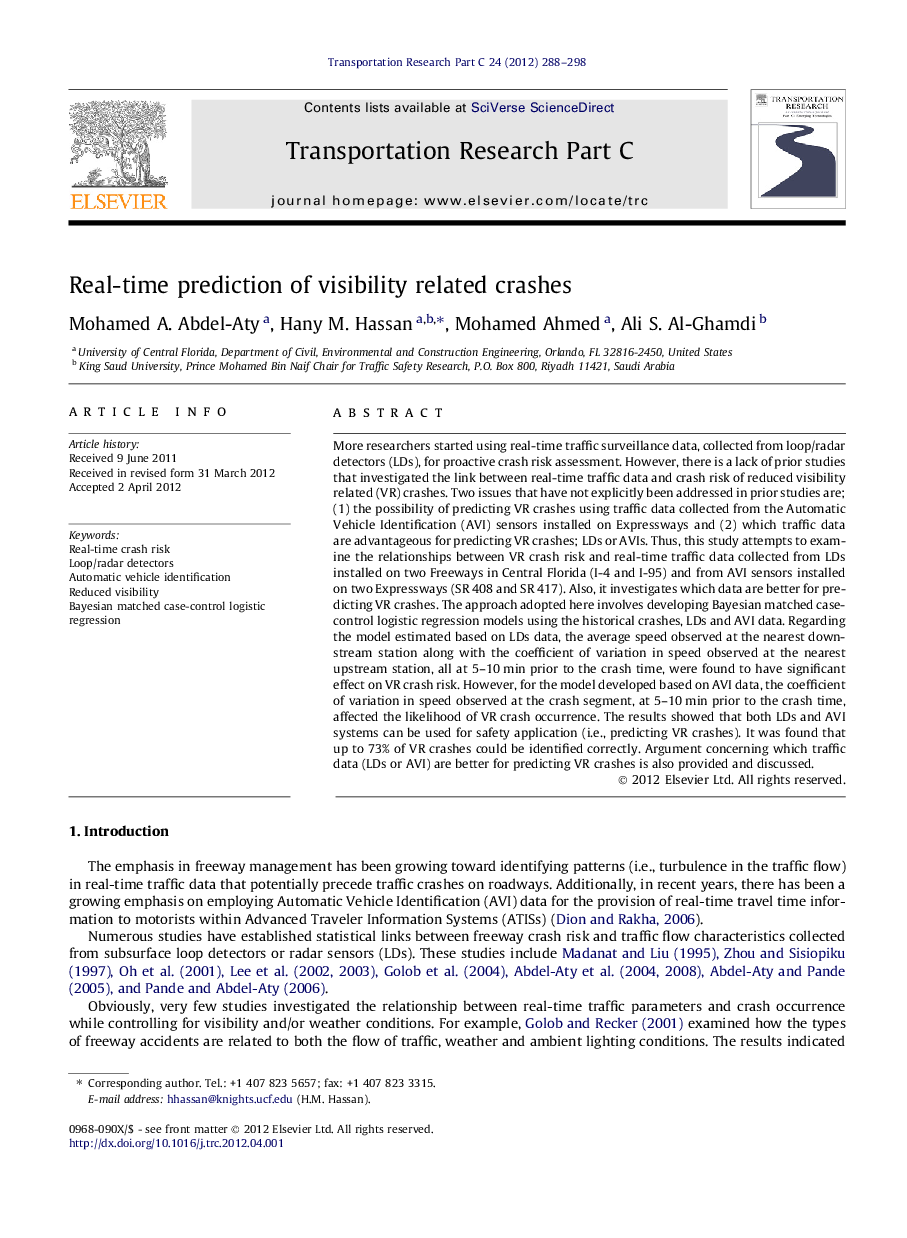| Article ID | Journal | Published Year | Pages | File Type |
|---|---|---|---|---|
| 525302 | Transportation Research Part C: Emerging Technologies | 2012 | 11 Pages |
More researchers started using real-time traffic surveillance data, collected from loop/radar detectors (LDs), for proactive crash risk assessment. However, there is a lack of prior studies that investigated the link between real-time traffic data and crash risk of reduced visibility related (VR) crashes. Two issues that have not explicitly been addressed in prior studies are; (1) the possibility of predicting VR crashes using traffic data collected from the Automatic Vehicle Identification (AVI) sensors installed on Expressways and (2) which traffic data are advantageous for predicting VR crashes; LDs or AVIs. Thus, this study attempts to examine the relationships between VR crash risk and real-time traffic data collected from LDs installed on two Freeways in Central Florida (I-4 and I-95) and from AVI sensors installed on two Expressways (SR 408 and SR 417). Also, it investigates which data are better for predicting VR crashes. The approach adopted here involves developing Bayesian matched case-control logistic regression models using the historical crashes, LDs and AVI data. Regarding the model estimated based on LDs data, the average speed observed at the nearest downstream station along with the coefficient of variation in speed observed at the nearest upstream station, all at 5–10 min prior to the crash time, were found to have significant effect on VR crash risk. However, for the model developed based on AVI data, the coefficient of variation in speed observed at the crash segment, at 5–10 min prior to the crash time, affected the likelihood of VR crash occurrence. The results showed that both LDs and AVI systems can be used for safety application (i.e., predicting VR crashes). It was found that up to 73% of VR crashes could be identified correctly. Argument concerning which traffic data (LDs or AVI) are better for predicting VR crashes is also provided and discussed.
► We investigate the links between real-time traffic data and crash risk of reduced visibility related (VR) crashes. ► We examine real-time prediction of VR crashes using LDs and AVI data. ► We investigate which data is advantageous in predicting VR crashes?
